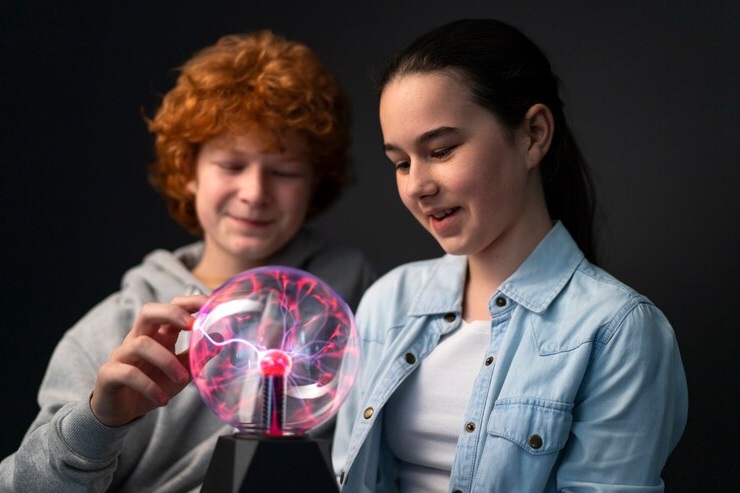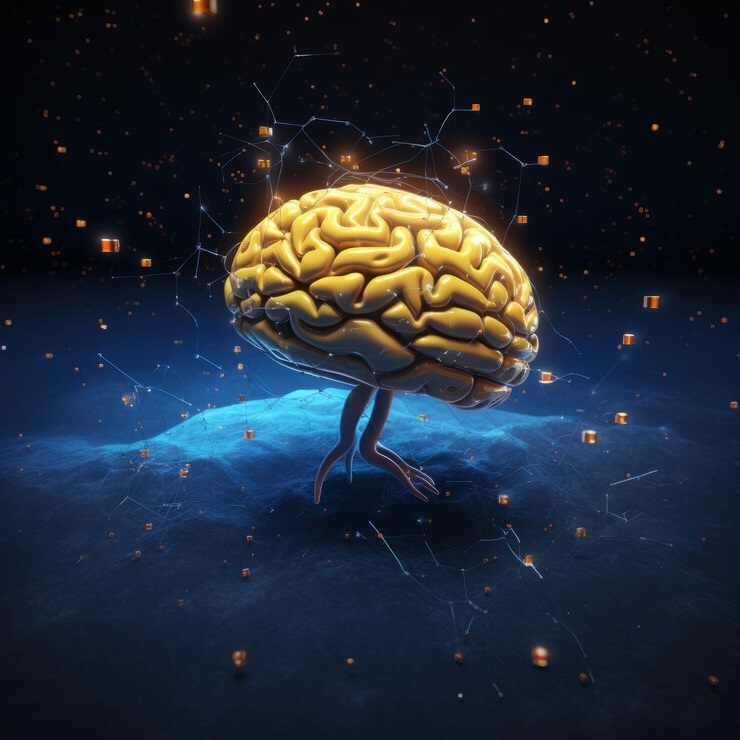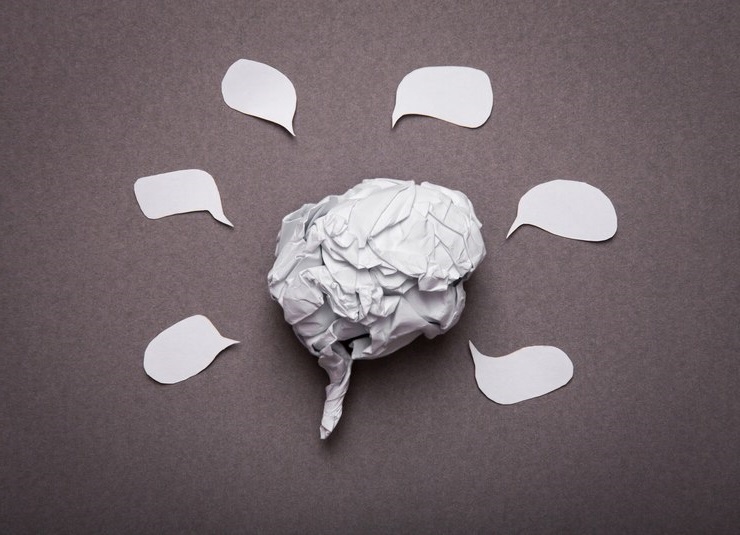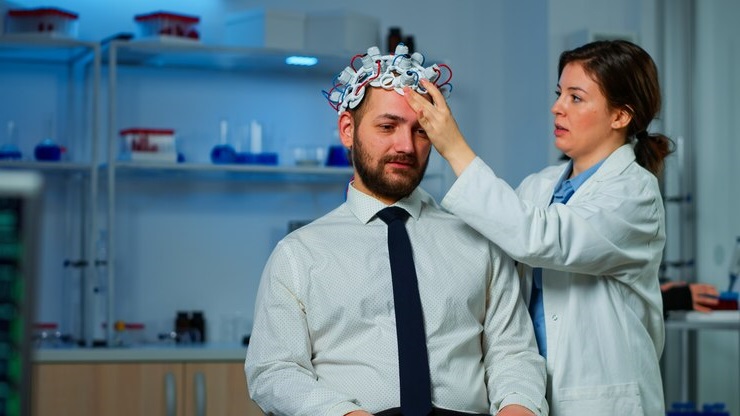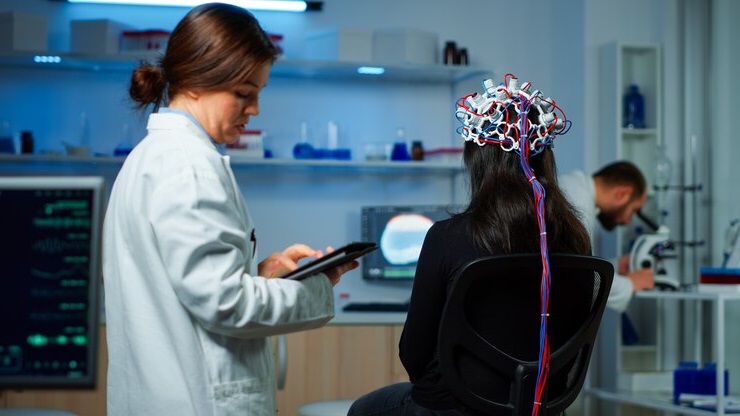
Neuroscience, the study of the brain and nervous system, has made significant contributions to the field of education. By understanding how the brain learns and processes information, educators can develop effective teaching strategies, design curriculum and instructional materials, and create interventions to support students with learning disabilities.
Additionally, neuroscience research has shed light on the impact of stress and emotions on learning, leading to the implementation of strategies to mitigate their effects. In this article, we will explore the various ways in which neuroscience is used in education to enhance student learning and promote cognitive development.
Understanding how the brain learns and processes information
One of the fundamental ways in which neuroscience is used in education is by studying how the brain learns and processes information. Through brain imaging techniques such as functional magnetic resonance imaging (fMRI) and electroencephalography (EEG), researchers can observe the neural activity associated with different learning tasks. This research has revealed valuable insights into the brain’s mechanisms of attention, memory, and problem-solving.
By understanding these processes, educators can tailor their teaching methods to optimize learning. For example, research has shown that the brain is more likely to retain information when it is presented in a meaningful and relevant context. Therefore, educators can design lessons that connect new information to students’ prior knowledge and real-world experiences, enhancing their ability to encode and retrieve information.
Identifying effective teaching strategies based on brain research
Neuroscience research has also been instrumental in identifying effective teaching strategies. For instance, studies have shown that active learning, where students engage in hands-on activities and participate in discussions, leads to better retention and understanding of information compared to passive learning methods such as lectures.
Additionally, research has highlighted the importance of feedback in the learning process. The brain responds positively to feedback that is timely, specific, and constructive, as it helps to reinforce correct information and correct misconceptions. Educators can use this knowledge to provide regular feedback to students, guiding them towards a deeper understanding of the material.
Furthermore, neuroscience research has emphasized the significance of spaced repetition and interleaving in promoting long-term retention. Instead of cramming information in a single study session, students benefit from spacing out their learning over time and interleaving different topics or skills. Educators can incorporate these strategies into their teaching by designing review activities and assessments that revisit previously learned material.
Developing educational interventions for students with learning disabilities
Another important application of neuroscience in education is the development of educational interventions for students with learning disabilities. By studying the neural differences associated with conditions such as dyslexia, ADHD, and autism spectrum disorders, researchers can gain insights into the underlying cognitive processes and develop targeted interventions.
For example, neuroscience research has shown that individuals with dyslexia have difficulty processing phonological information, which affects their reading abilities. Based on this knowledge, educators can implement interventions that focus on phonological awareness and decoding skills to support students with dyslexia.
Similarly, neuroscientific studies have revealed differences in attention and executive functioning in individuals with ADHD. Educators can use this information to develop interventions that enhance attention and self-regulation skills, such as providing structured routines, breaking tasks into smaller steps, and incorporating movement breaks into the classroom.
Enhancing memory and retention through neuroscience-based techniques
Neuroscience research has also provided valuable insights into memory and retention, leading to the development of techniques that enhance learning. For instance, studies have shown that retrieval practice, where students actively recall information from memory, improves long-term retention compared to passive review.
Based on this research, educators can incorporate regular retrieval practice activities into their lessons, such as quizzes, flashcards, and concept maps. These activities not only reinforce learning but also help students identify gaps in their understanding, allowing for targeted review and clarification.
Furthermore, neuroscience research has highlighted the importance of sleep in memory consolidation. During sleep, the brain processes and consolidates newly acquired information, leading to better retention. Educators can encourage healthy sleep habits among students by promoting the importance of a consistent sleep schedule and minimizing late-night studying.
Designing curriculum and instructional materials that align with brain-based learning principles
Neuroscience research has also influenced the design of curriculum and instructional materials to align with brain-based learning principles. By considering how the brain processes information, educators can create materials that optimize learning and engagement.
For example, research has shown that the brain is more likely to retain information when it is presented in a visually appealing and organized manner. Educators can incorporate visual aids, such as diagrams, charts, and infographics, to enhance understanding and memory retention.
Additionally, neuroscience research has emphasized the importance of active engagement and multisensory learning. By incorporating hands-on activities, group discussions, and real-world examples into their lessons, educators can provide students with multiple pathways to engage with and process information.
Furthermore, research has shown that the brain is more likely to retain information when it is presented in a meaningful and relevant context. Educators can make connections to students’ prior knowledge and real-world experiences, helping them see the relevance and applicability of the material.
Using brain imaging techniques to study the effects of different teaching methods
Brain imaging techniques, such as fMRI and EEG, have also been used to study the effects of different teaching methods on the brain. By observing neural activity during different instructional approaches, researchers can gain insights into the effectiveness of various teaching strategies.
For example, studies have compared the neural responses of students during traditional lectures versus active learning activities. The findings have consistently shown that active learning engages more regions of the brain associated with attention, memory, and higher-order thinking, indicating its effectiveness in promoting learning.
Similarly, brain imaging studies have compared the effects of direct instruction versus inquiry-based learning. The results have shown that inquiry-based learning activates regions of the brain associated with curiosity, motivation, and problem-solving, suggesting its potential to enhance engagement and critical thinking skills.
By using brain imaging techniques, educators and researchers can gain a deeper understanding of how different teaching methods impact the brain and make informed decisions about instructional practices.
Applying neurofeedback to improve attention and focus in students
Neurofeedback, a technique that provides real-time feedback on brain activity, has shown promise in improving attention and focus in students. By using EEG or fMRI to measure brain activity, individuals can learn to self-regulate their brainwaves and improve their cognitive functioning.
Neurofeedback has been particularly beneficial for students with attention-related disorders such as ADHD. By training individuals to increase their focus and reduce impulsivity, neurofeedback can help students improve their academic performance and classroom behavior.
Additionally, neurofeedback has been used to enhance cognitive skills such as working memory and executive functioning. By providing feedback on brain activity associated with these skills, individuals can learn to improve their cognitive abilities, leading to better academic outcomes.
Incorporating movement and physical activity into the classroom to enhance brain function
Research has shown that physical activity and movement can enhance brain function and improve learning outcomes. By incorporating movement breaks, physical activities, and kinesthetic learning into the classroom, educators can optimize brain function and promote cognitive development.
Physical activity increases blood flow to the brain, delivering oxygen and nutrients that support neural functioning. It also stimulates the release of neurotransmitters such as dopamine and endorphins, which enhance mood, attention, and motivation.
Furthermore, movement and physical activity have been shown to improve memory and information processing. Studies have found that students who engage in physical activity before or during learning tasks perform better on memory tests and demonstrate improved cognitive flexibility.
Educators can incorporate movement and physical activity into the classroom by incorporating brain breaks, active learning activities, and kinesthetic learning strategies. These strategies not only enhance brain function but also promote a positive and engaging learning environment.
Using brain-based assessments to measure student progress and learning outcomes
Neuroscience research has also influenced the development of brain-based assessments to measure student progress and learning outcomes. These assessments go beyond traditional measures of knowledge and evaluate cognitive processes and skills.
For example, cognitive assessments such as working memory tasks, attention tests, and problem-solving activities can provide insights into students’ cognitive abilities and identify areas of strength and weakness. These assessments can help educators tailor their instruction to meet individual student needs and provide targeted interventions.
Additionally, assessments that measure metacognitive skills, such as self-regulation and reflection, can provide valuable information about students’ ability to monitor and control their own learning. By assessing these skills, educators can help students develop metacognitive strategies that enhance their learning and academic success.
Furthermore, neuroscience research has highlighted the importance of assessing social-emotional skills such as empathy, self-awareness, and resilience. These skills are crucial for students’ overall well-being and success in school. By incorporating assessments that measure these skills, educators can identify areas for growth and implement interventions to support students’ social-emotional development.
Applying neuroscience principles to enhance creativity and problem-solving skills in students
Neuroscience research has provided insights into the neural mechanisms underlying creativity and problem-solving, leading to the development of strategies to enhance these skills in students.
For instance, studies have shown that the brain is more likely to generate creative ideas when it is in a relaxed and positive state. Educators can create a supportive and non-judgmental classroom environment that encourages risk-taking and exploration, fostering creativity in students.
Additionally, research has highlighted the importance of divergent thinking in problem-solving. Divergent thinking involves generating multiple solutions to a problem, promoting flexibility and innovation. Educators can incorporate activities that encourage divergent thinking, such as brainstorming sessions and open-ended projects, to enhance students’ problem-solving skills.
Furthermore, neuroscience research has emphasized the role of curiosity in learning and problem-solving. By stimulating students’ curiosity through inquiry-based activities, educators can enhance their motivation and engagement, leading to deeper learning and problem-solving abilities.
Understanding the impact of stress and emotions on learning and implementing strategies to mitigate their effects
Neuroscience research has highlighted the impact of stress and emotions on learning and cognitive functioning. High levels of stress can impair memory, attention, and problem-solving abilities, while positive emotions can enhance learning and cognitive performance.
Educators can use this knowledge to implement strategies that mitigate the negative effects of stress and promote positive emotions in the classroom. For example, creating a supportive and inclusive classroom environment, providing opportunities for student choice and autonomy, and incorporating mindfulness and relaxation techniques can help reduce stress and enhance emotional well-being.
Additionally, educators can teach students strategies to manage stress and regulate their emotions, such as deep breathing exercises, journaling, and positive self-talk. These strategies empower students to take control of their emotional state and optimize their learning potential.
Using brain-based strategies to promote motivation and engagement in the classroom
Neuroscience research has provided insights into the neural mechanisms underlying motivation and engagement, leading to the development of strategies to promote these factors in the classroom.
For instance, studies have shown that the brain is more likely to engage with and retain information that is personally relevant and meaningful. Educators can make learning more meaningful by connecting it to students’ interests, goals, and real-world applications. This can be done through project-based learning, problem-solving activities, and incorporating student choice and autonomy.
Furthermore, research has highlighted the importance of intrinsic motivation in promoting engagement and deep learning. Intrinsic motivation refers to the internal drive to learn and achieve, rather than relying on external rewards or punishments. Educators can foster intrinsic motivation by providing opportunities for autonomy, mastery, and purpose in the classroom.
Additionally, neuroscience research has emphasized the role of positive feedback and reinforcement in promoting motivation and engagement. By providing specific and constructive feedback, educators can help students develop a growth mindset and a sense of competence, leading to increased motivation and engagement.
Applying neuroplasticity principles to support the development of new skills and abilities in students
Neuroplasticity, the brain’s ability to change and reorganize itself in response to experience, has important implications for education. By understanding the principles of neuroplasticity, educators can support the development of new skills and abilities in students.
For example, research has shown that repeated practice and deliberate effort can strengthen neural connections and enhance skill acquisition. Educators can provide opportunities for students to engage in deliberate practice, breaking down complex skills into smaller components and providing targeted feedback and support.
Furthermore, research has highlighted the importance of challenging and stimulating environments in promoting neuroplasticity. Educators can create a rich and varied learning environment that exposes students to new experiences, ideas, and challenges, promoting the development of new neural connections.
Additionally, neuroscience research has emphasized the role of sleep in consolidating learning and promoting neuroplasticity. By encouraging healthy sleep habits and providing opportunities for rest and reflection, educators can support the brain’s ability to integrate and retain new information.
Incorporating mindfulness and meditation practices to promote emotional well-being and cognitive function in students
Mindfulness and meditation practices have gained recognition in education for their ability to promote emotional well-being and cognitive function. These practices, rooted in neuroscience research, can help students develop self-awareness, regulate their emotions, and enhance attention and focus.
Research has shown that mindfulness and meditation practices can reduce stress, anxiety, and depression, while promoting positive emotions and well-being. By incorporating mindfulness exercises into the classroom, educators can create a calm and focused learning environment that supports students’ emotional and cognitive development.
Furthermore, mindfulness and meditation practices have been shown to enhance attention and focus. By training students to be present and non-judgmental, these practices can improve their ability to sustain attention, ignore distractions, and engage in deep learning.
Educators can incorporate mindfulness and meditation practices into the classroom through short guided exercises, mindful breathing breaks, and reflective activities. These practices can be integrated into daily routines or used during transitions to promote emotional well-being and cognitive function.
Using brain-based interventions to support students with ADHD and other attention-related disorders
Students with ADHD and other attention-related disorders can benefit from brain-based interventions that target their specific cognitive challenges. By understanding the neural mechanisms underlying these disorders, educators can implement strategies that support attention, self-regulation, and academic success.
For example, research has shown that individuals with ADHD have difficulty inhibiting irrelevant information and sustaining attention. Educators can implement interventions that provide structure, minimize distractions, and break tasks into smaller, manageable steps. Additionally, incorporating movement breaks and kinesthetic learning strategies can help students with ADHD engage their attention and regulate their energy levels.
Furthermore, research has highlighted the importance of executive functioning skills, such as planning, organization, and time management, in supporting students with attention-related disorders. Educators can provide explicit instruction and support in developing these skills, such as using visual schedules, checklists, and timers.
Additionally, brain-based interventions such as neurofeedback and cognitive training programs have shown promise in improving attention and self-regulation in individuals with ADHD. These interventions can be implemented in collaboration with healthcare professionals and tailored to individual student needs.
Applying neuroscience research to inform educational policy and decision-making
Neuroscience research has the potential to inform educational policy and decision-making at various levels, from individual classrooms to national education systems. By translating research findings into practical applications, policymakers and educators can create evidence-based policies and practices that enhance student learning and well-being.
For example, neuroscience research on the impact of early childhood experiences on brain development has influenced policies and programs that promote early intervention and support for at-risk children. By investing in high-quality early education and providing resources for families, policymakers can help mitigate the effects of adverse experiences and promote healthy brain development.
Additionally, neuroscience research on the effects of poverty and stress on learning has informed policies that address educational inequities and provide support for disadvantaged students. By implementing strategies such as targeted interventions, smaller class sizes, and increased access to resources, policymakers can create a more equitable education system.
Furthermore, neuroscience research on the impact of technology on the brain has led to policies and guidelines that promote responsible and effective use of digital tools in the classroom. By incorporating technology that aligns with brain-based learning principles, educators can enhance student engagement, collaboration, and critical thinking.
Using brain-based strategies to promote inclusive and equitable education for all students
Neuroscience research has emphasized the importance of inclusive and equitable education for all students. By understanding the diverse needs and strengths of students, educators can implement brain-based strategies that promote inclusivity and support the success of every learner.
For example, research has shown that students learn best when they feel a sense of belonging and connection in the classroom. Educators can create a supportive and inclusive learning environment by fostering positive relationships, promoting empathy and understanding, and valuing diverse perspectives and experiences.
Additionally, neuroscience research has highlighted the importance of individualized instruction and differentiated learning experiences. By providing multiple pathways to learning, educators can accommodate different learning styles, abilities, and interests, ensuring that all students have access to a high-quality education.
Furthermore, research has shown that students from disadvantaged backgrounds may require additional support to overcome the effects of poverty and stress on learning. Educators can implement targeted interventions, such as tutoring programs, mentoring initiatives, and access to resources, to provide equitable opportunities for all students.
Incorporating technology and digital tools that align with brain-based learning principles
Technology and digital tools have become increasingly prevalent in education, and neuroscience research can inform their effective use in the classroom. By incorporating technology that aligns with brain-based learning principles, educators can enhance student engagement, collaboration, and critical thinking.
For example, research has shown that multimedia presentations, such as videos, animations, and interactive simulations, can enhance understanding and memory retention. Educators can incorporate these multimedia resources into their lessons to provide visual and interactive experiences that support learning.
Additionally, technology can facilitate personalized and adaptive learning experiences. By using educational software and platforms that adapt to individual student needs and provide immediate feedback, educators can tailor instruction to meet each student’s unique learning profile.
Furthermore, technology can promote collaboration and communication among students. Online discussion forums, collaborative projects, and virtual classrooms can provide opportunities for students to engage with their peers, share ideas, and develop critical thinking and communication skills.
Applying neuroscience principles to enhance critical thinking and problem-solving skills in students
Neuroscience research has provided insights into the neural mechanisms underlying critical thinking and problem-solving, leading to the development of strategies to enhance these skills in students.
For instance, research has shown that the brain is more likely to engage in critical thinking when it is in a relaxed and positive state. Educators can create a supportive and non-judgmental classroom environment that encourages risk-taking and exploration, fostering critical thinking in students.
Additionally, research has highlighted the importance of metacognition in promoting critical thinking. Metacognition refers to the ability to reflect on and monitor one’s own thinking processes. Educators can teach students metacognitive strategies, such as self-questioning and self-reflection, to enhance their critical thinking skills.
Furthermore, neuroscience research has emphasized the role of curiosity in learning and problem-solving. By stimulating students’ curiosity through inquiry-based activities, educators can enhance their motivation, engagement, and critical thinking abilities.
Using brain-based strategies to support students with autism spectrum disorders and other neurodevelopmental conditions
Students with autism spectrum disorders and other neurodevelopmental conditions can benefit from brain-based strategies that support their unique learning profiles. By understanding the neural mechanisms underlying these conditions, educators can implement strategies that promote communication, social skills, and academic success.
For example, research has shown that individuals with autism spectrum disorders often have difficulty with social communication and understanding others’ perspectives. Educators can implement strategies that promote social skills and empathy, such as social stories, visual supports, and structured social interactions.
Additionally, research has highlighted the importance of visual supports and structured routines in supporting individuals with autism spectrum disorders. By providing visual schedules, visual cues, and clear expectations, educators can help students navigate the classroom environment and understand daily routines.
Furthermore, brain-based interventions such as neurofeedback and cognitive training programs have shown promise in improving attention, self-regulation, and social skills in individuals with autism spectrum disorders. These interventions can be implemented in collaboration with healthcare professionals and tailored to individual student needs.
Incorporating interdisciplinary approaches that integrate neuroscience with other fields of study in education
Interdisciplinary approaches that integrate neuroscience with other fields of study, such as psychology, cognitive science, and education, can provide a comprehensive understanding of how the brain learns and inform effective educational practices.
For example, the field of educational neuroscience combines insights from neuroscience, psychology, and education to study how the brain learns and develop evidence-based interventions. By integrating knowledge from these disciplines, educators can implement strategies that optimize learning and support cognitive development.
Additionally, interdisciplinary approaches can inform the design of educational technologies and digital tools. By combining expertise from neuroscience, computer science, and education, researchers and developers can create technology that aligns with brain-based learning principles and enhances student engagement and learning outcomes.
Furthermore, interdisciplinary collaborations can inform the design of teacher training programs and professional development initiatives. By integrating neuroscience research into teacher education, educators can develop a deeper understanding of how the brain learns and apply this knowledge in their instructional practices.

